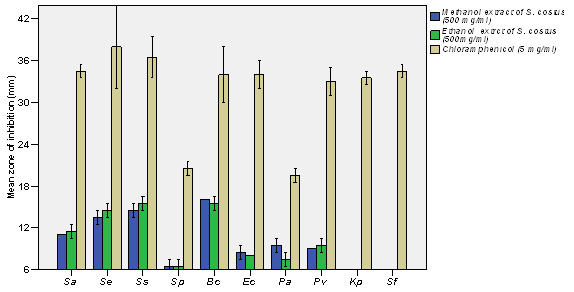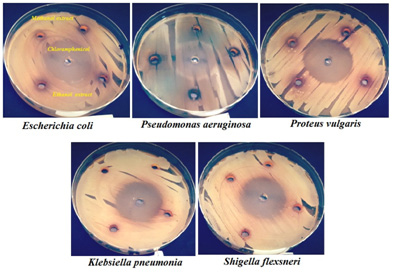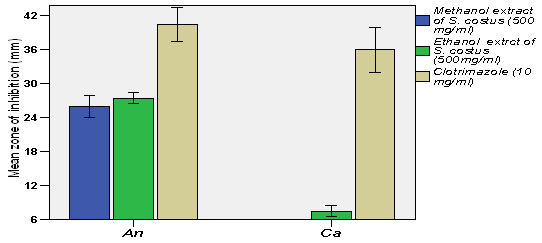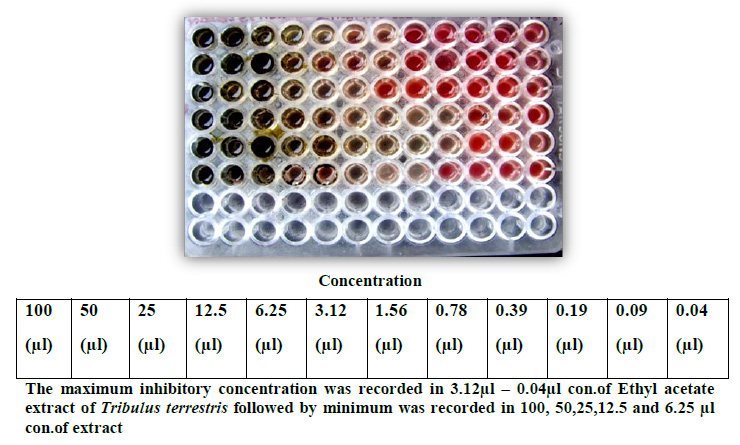Department of Petroleum Engineering, Marvdasht Branch, Islamic Azad University, Marvdasht, Iran
Corresponding author Email: amin.azhdarpour@miau.ac.ir
Article Publishing History
Received: 21/12/2016
Accepted After Revision: 25/03/2017
Petroleum production from the reservoir is initially occurs by the natural energy of the reservoir itself. The reservoir pressure is usually high at the early stage of reservoir life, thus, it pumps crude oil to the surface. However, after some time of production, reservoir pressure starts to decline. In addition, penetration of solid particles into the pores causes plugging and results in formation permeability reduction. Hence, natural production from the reservoir starts to decrease after some time, depending on pressure drop rate and the degree of damage to the formation. Well testing is one of the practical methods for analysing the well. Pressure build up test is one of the most widely used well testing methods for analysing the well. In this study, a pressure build up test was conducted for 24 hours and then the pressure data were analysed using Saphir software. Finally, the well characteristics were used to analyse the inflow performance relationship (IPR) of the well. The well testing results showed that the well suffers from high skin, which hinders the effective production from the reservoir. In addition, IPR analysis using Vogel’s and Darcy’s method showed that the absolute open flow (AOF) is affected by the skin factor. The resulted AOF was always higher without the effect of skin factor included.
Well Testing, Ipr, Aof, Saphir Software, Skin Factor
Shokri A, Azdarpour A, Honarvar B. Analysis of Inflow Performance Relationship and Reservoir Characteristics Using Saphir Software. Biosc.Biotech.Res.Comm. 2017;10(1).
Shokri A, Azdarpour A, Honarvar B. Analysis of Inflow Performance Relationship and Reservoir Characteristics Using Saphir Software. Biosc.Biotech.Res.Comm. 2017;10(1). Available from: https://bit.ly/2Zz8BNG
Introduction
Description of the dynamic behaviours of underground formation containing hydrocarbons are one of the most important challenges in oil and gas engineering. Thus, detailed information regarding the reservoirs is required to have a comprehensive knowledge about the current and future reservoir performance. Effective permeability of the reservoir, degree of the damage to the well bore, skin effect, average reservoir pressure, and fault description are the importance reservoir characteristics, which should be identified for each well (Vaferi et al. 2009; Gringarten, 2012; Hills et al. 2014; Shahbazi et al. 2016).
Well testing analysis was first proposed in 1937 by Muskat to evaluate hydrocarbon reservoir performance. The general concept of the well testing is to create a flow disturbance in the well and analysing the pressure changes in the Bottomhole. Pressure build up and draw down test are two of the most widely used well testing methods to analyse well performance. During pressure build up test, the well is shut in for a period of time, thus, reservoir pressure starts to rise and build. In a draw down test, the well is produced at a constant flow rate for some time, during which reservoir pressure falls down. The pressure data versus time are recorded and analysed to predict the performance of the well. Appropriated well testing methods in which their main goal is to have the best match between the recorded pressure data and some ideal reservoir models can be used to evaluate well performance (SadeghiBoogar and Masihi, 2010; Onur and Kuchuk, 2012; Ghaffarian et al. 2014; Cho et al. 2013; Vaferi et al. 2015; Shahbazi et al. 2015).
Rosa and Horne (1997) investigated the discontinuities in permeability in the reservoir using a cyclic stimulation on an active well. The pulse was transmitted through a well and the response was received from another well. Different frequencies were generated as the results of different pulse signals, which allowed the possibility of investigating different extensions of the reservoir. The main result of their investigation was an equation to investigate the radius of cyclic influence for a given dimensionless frequency. Their study was later continued by Ahn and Horne (2010) in 2010 by focusing on different frequencies and phase data to analyse the generic interwell permeability profiles.
The reservoir heterogeneities of a gas filed and synthetic field was analysed by Fokker et al. (2012). They used different pulse testing through both attenuation and phase information, which last for several months. Their results showed that the well testing provide valuable information on the current status of the well. In addition, significant recommendations for improving the overall performance of the well were made by analysing the well test results. Lin (2014) investigated a well using flow rate profile logging through pressure build up and falloff test analysis. In this method, the wellbore history was not used to investigate the reservoir permeability, skin factor, and formation pressure. Instead, the flow rate data was gained from the flow test during the production and using pressure build up and falloff tests. In conventional well testing analysis, type curve analysis, log-log plots and derivatives methods are used to obtain the results, however this method reduced the sequences of achieving final results. Thus, skin factor and reservoir permeability were achieved with high reliability.
Rosario et al. (2016) used field testing of conventional and deconvolution methods to analyse pressure build up tests. They mainly tested real-time sand face rate measurements during the after flow periods. Their analysis showed that deconvolution methods provide much stronger results than the conventional methods. However, real-time data acquisition quality was the main factor affecting their reliability. In addition, they concluded that to have a comprehensive and accurate description of the reservoir, deconvolution methods cannot be used solely and conventional methods are required to be applied. In addition, the reliability of the matching, permeability and skin factor determination are improved using their techniques.
In this study, reservoir characteristics and performance of an oil reservoir in west of Iran was studied and analysed using rock and fluid properties as well pressure build up test. Since bubble point pressure of the reservoir was close to the initial reservoir pressure of the reservoir, Vogel’s method was used to analyse reservoir performance. The results were then compared with the results achieved using Darcy’s method. Well testing analysis was done using Saphir software.
Materials and Methods
Description Of The Reservoir Model
An oil reservoir located in west Iran was analysed suing pressure build up test for 24 hours. Porosity of the reservoir is 35% and net thickness of the productive layer is about 65 ft. In addition, formation rock compressibility is 2.7×10-5 psi-1 and total compressibility is about 9.9×10-6 psi-1. Table 1 represents other reservoir properties.
| Table 1: Reservoir properties | |
| Properties | Value |
| Connate water saturation | 35% |
| Oil saturation | 75% |
| Bubble point pressure (psi) | 1399 |
| Reservoir temperature (F) | 130 |
| Well radius (ft) | 0.5 |
| Oil viscosity (cP) | 3 |
| Oil formation volume factor (bbl/STB) | 1.2 |
Well Testing Analysis
A pressure build up test was conducted on well number 1 for 24 hours. Then, the results of pressure data versus time as well as flow rates were used as an input to be used in Saphir software. Other reservoir properties including well radius, productive layer thickness, porosity, type of fluid, total compressibility, oil viscosity, and reservoir temperature were added to the model. After running the model, pressure and pressure derivative figures on log-log scale and semi-log scale were produced as the results of well testing analysis. The figures were then analysed to determine the values of skin factor, reservoir permeability, and initial reservoir pressure. After determining the reservoir parameters, then reservoir performance was analysed sing IPR/AOF section of the software. The reservoir parameters and flow test results were used to determine inflow performance relationship (IPR) of the well. Finally, the IPR curves were used to determine the absolute open flow (AOF) of the well using two different methods of Darcy and Vogel.
Results and Discussion
Pressure Build Up Test Analysis
Figures 1 to 3 represent the log-log plot of pressure data, semi-log plot of pressure data, and production history of the well, respectively. As shown in these figures, perfect matches have taken from experimental results, which prove the reliability of the simulation results. The simulation results showed that the reservoir model in this study is a homogenous reservoir with a fault at the boundary of the reservoir. The presence of this fault in the reservoir results in additional pressure drop in the reservoir.
 |
Figure 1: Log-log plot of pressure build up data |
 |
Figure 2: Semi-log plot of pressure build up data |
 |
Figure 3: History plot of production rate and reservoir pressure in well number one |
Table 2 represents the reservoir properties gained from simulation results. As shown in this table, initial reservoir pressure is about 1078 psi, which is below the bubble point pressure of the reservoir (1399 psi). Thus, this reservoir is a saturated oil reservoir with gas existed in the reservoir. On the other hand, the reservoir productivity is about 15100 mD.ft and reservoir permeability is about 233 mD and skin factor of the reservoir is 22. The simulation results show that reservoir permeability is high enough to deliver the fluid from reservoir to the wellbore, however on the other hand, the current condition of the well is not favourable in terms of production since a high value of skin factor is achieved. A solution to this problem could be acidizing of the well or hydraulic fracturing to remove the scales inhibiting the fluid flow to the surface (Guo et al. 2014, Ghommem et al. 2015 and Zhou et al. 2016).
| Table 2: Reservoir simulation results from Saphir software | |
| Properties | Value |
| Pi | 1078 psi |
| kh | 15100 mD.ft |
| k | 233 mD |
| Skin | 22 |
Inflow Performance Relationship (Ipr) Of The Well Using Darcy Method
A flow test with flow rate of 1600 STB/day and Bottomhole flowing pressure of 450 psi was conducted on well number one. Initially, the IPR curve is assumed to be linear, where the slope is productivity index (PI) inverse. Then, IPR curve was analysed in two different cases of skin factor of 22 and 0. Figures 4 and 5 represent the IPR curves when skin factor is 22 and 0, respectively.
 |
Figure 4: IPR plot of well number one with skin factor included using Darcy’s method |
 |
Figure 5: IPR plot of well number one without the effect of skin factor using Darcy’s method |
As shown in these figures, there is a big difference between the maximum producing flow rates with and without skin factor. Table 3 summarizes the IPR results achieved with and without skin factor in this study. As shown in this table, the maximum producing flow rate (AOFP) with skin is about 2081 STB/day while the value is 3454 STB/day without the effect of skin factor. On the other hand, productivity index o0f the well is 1.02 and 4.25 STB/day/psi with and without skin factor, respectively. This suggest that skin factor has a detrimental impact on producing flow rate and productivity of the well, which must be solved for high production rates (Mahdiyar et al. 2011; Luo et al. 2016).
| Table 3: IPR results with and without skin factor | ||
| Parameter | Value | Skin factor |
| AOFP | 2081 STB/day | 22 |
| AOFP | 3454 STB/day | 0 |
| Productivity index (PI) | 1.02 STB/day/psi | 22 |
| Productivity index (PI) | 4.25 STB/day/psi | 0 |
 |
Figure 6: IPR plot of well number one with skin factor included using Vogel’s method |
 |
Figure 7: IPR plot of well number one without the effect of skin factor using Vogel’s method |
Inflow Performance Relationship (Ipr) Of The Well Using Vogel Method
Since reservoir pressure is close to the bubble point pressure of the reservoir and reservoir is saturated, Darcy’s method cannot be used for analysing the well performance. Thus, Vogel’s method should be skin effect. These results suggest that skin factor has negative effect on production rate, which reduces it significantly. Thus, methods of skin removal such as acidizing and hydraulic fracturing are of great importance (Dehghan et al. 2015 Yegin et al. 2016 and Sobhaniaragh et al. 2016).
Conclusion
The well testing analysed through pressure build up test showed that the reservoir is a homogenous reservoir bounded with an impermeable fault. The value of skin factor in this reservoir is too high, which impeded the natural production from the well. This negative impact of skin factor could be solved through acidizing of hydraulic fracturing of the well. The reservoir permeability is high enough to deliver sufficient fluid from the reservoir to the wellbore, however the lift to the surface requires addition support by skin removal. Darcy’s method can be used when bubble point pressure and reservoir pressure are not close, which results in linear IPR. However, when the values of pressures are close to each other, then Vogel’s method should be used to analyse the well performance. In this case, the IPR is no longer linear and it is curvature.
Acknowledgements
The authors would like to appreciate the Department of Petroleum Engineering, Marvdasht Branch, Islamic Azad University, Marvdasht, Iran for the provision of the laboratory facilities necessary for completing this work.
References
- Ahn, S. and Horne, R. N. (2010). A New Look at Nonlinear Regression in Well-Test Interpretation.Presented at the SPE Annual Technical Conference and Exhibition, Florence, Italy, 19–22 September.
- Cho, Y., Apaydin, O.G., Ozkan, E. (2013). Pressure-Dependent Natural-Fracture Permeability in Shale and its Effect on Shale-Gas Well Production. SPE Reserv. Eval. Eng. 16 (02), 216–228.
- Dehghan, A.N., Goshtasbi, K., Ahangari, K., Jin, Y. (2015). Mechanism of fracture initiation and propagation using a tri-axial hydraulic fracturing test system in naturally fractured reservoirs. European Journal of Environmental and Civil Engineering, 20 (5), 560-585.
- Fokker, P. A., Borello, E. S., Serazio, C., Verga, F. (2012). Estimating Reservoir Heterogeneities From Pulse testing. J. Pet. Sci. Eng. 86–87, 15-26.
- Ghaffarian, N., Eslamloueyan, R., Vaferi, B. (2014). Hydrocarbon reservoir model detection from pressure transient data using coupled artificial neural network—Wavelet transform approach. J. Pet. Sci. Eng. 23, 20–29.
- Ghommem, M., Zhao, W., Dyer, S., Qiu, X., Brady, D. (2015). Carbonate acidizing: Modeling, analysis, and characterization of wormhole formation and propagation. Journal of Petroleum Science and Engineering, 131, 18-33.
- Gringarten, A.G. (2012). Well Test Analysis in Practice. Society of Petroleum Engineers Way Ahead Journal 8, 2.
- Guo, J., Liu, H., Zhu, Y., Liu, Y. (2014). Effects of acid–rock reaction heat on fluid temperature profile in fracture during acid fracturing in carbonate reservoirs. Journal of Petroleum Science and Engineering, 122, 31-37.
- Hills, J., Lines, J., Baranauskas, E., Mapp, J., Bagnall, A. (2014). Classification of time series by shapelet transformation. Data Min. Knowl. Discov. 28 (4), 851–881.
- Lin, J.E. (2014). Pressure Buildup or Falloff Test Analysis for a Well in Commingled Reservoirs with Flow Rate Profile Logging. Presented at the International Petroleum Technology Conference, 10-12 December, Kuala Lumpur, Malaysia.
- Luo, W., Wang, X., Feng, Y., Tang, C., Zhou, Y. (2016). Productivity analysis for a vertically fractured well under non-Darcy flow condition.Journal of Petroleum Science and Engineering, 146, 714-725.
- Mahdiyar, H., Jamiolahmady, M., Sohrabi, M. (2011). Improved Darcy and non-Darcy flow formulations around hydraulically fractured wells. Journal of Petroleum Science and Engineering, 78, 149-159.
- Onur, M., Kuchuk, F.J. (2010). A New Pressure-Rate Deconvolution Technique Based on Pressure Derivatives for Pressure Transient Test Interpretation. SPE J. 17, 307–320.
- Rosa, A. J. and Horne, R. N. (1997). Reservoir Description by Well Test Analysis Using Cyclic Flow Rate Variation. SPE Form Eval 12 (4): 247–254.
- Rosario, O., Martinez, M., Baumann, C. (2016). Applied Buildup Well Test Interpretation: Field Testing of Conventional and Deconvolution Methods.Presented at the SPE International Conference and Exhibition on Formation Damage Control, 24-26 February, Lafayette, Louisiana, USA.
- SadeghiBoogar, A., Masihi, M. (2010). New technique for calculation of well deliv-erability in gas condensate reservoirs J. Nat. Gas Sci. Eng. 2, 29–35.
- Shahbazi, Sh., Maarefvand, P., Gerami, Sh. (2016). Transient pressure test analysis of horizontal wells in gas condensate reservoirs: Evaluation of conventional multi-phase pseudo-pressure solutions. Journal of Petroleum Science and Engineering, 145, 668–688.
- Shahbazi, S., Maarefvand, P., Gerami, S. (2015). Investigation on flow regimes and non-Darcy effect in pressure test analysis of horizontal gas wells J. Pet. Sci. Eng.129, 121–129.
- Sobhaniaragh, B., Mansur, W.J., Peters, F.C. (2016). Three-dimensional investigation of multiple stage hydraulic fracturing in unconventional reservoirsJournal of Petroleum Science and Engineering, 146, 1063-1078.
- Vafaei, M.T., Eslamloueyan, R., Ayatollahi, Sh. (2009). Simulation of steam distillation process using neural networksChemical Engineering Research and Design, 87(8), 997–1002.
- Vaferi, B., Eslamloueyan, R., Ayatollahi, Sh. (2015). Application of recurrent networks to classification of oil reservoir models in well-testing analysis.Energy Sources A 37, 174–180.
- Yegin, C., Zhang, M., Varsha Talari, J., Akbulut, M. (2016). Novel hydraulic fracturing fluids with improved proppant carrying capacity and pH-adjustable proppant deposition behaviour. Journal of Petroleum Science and Engineering, 145, 600-608.
- Zhou, Z., Abass, H., Li, X., Bearinger, D., Frank, W. (2016). Mechanisms of imbibition during hydraulic fracturing in shale formations. Journal of Petroleum Science and Engineering, 141, 125-132.


